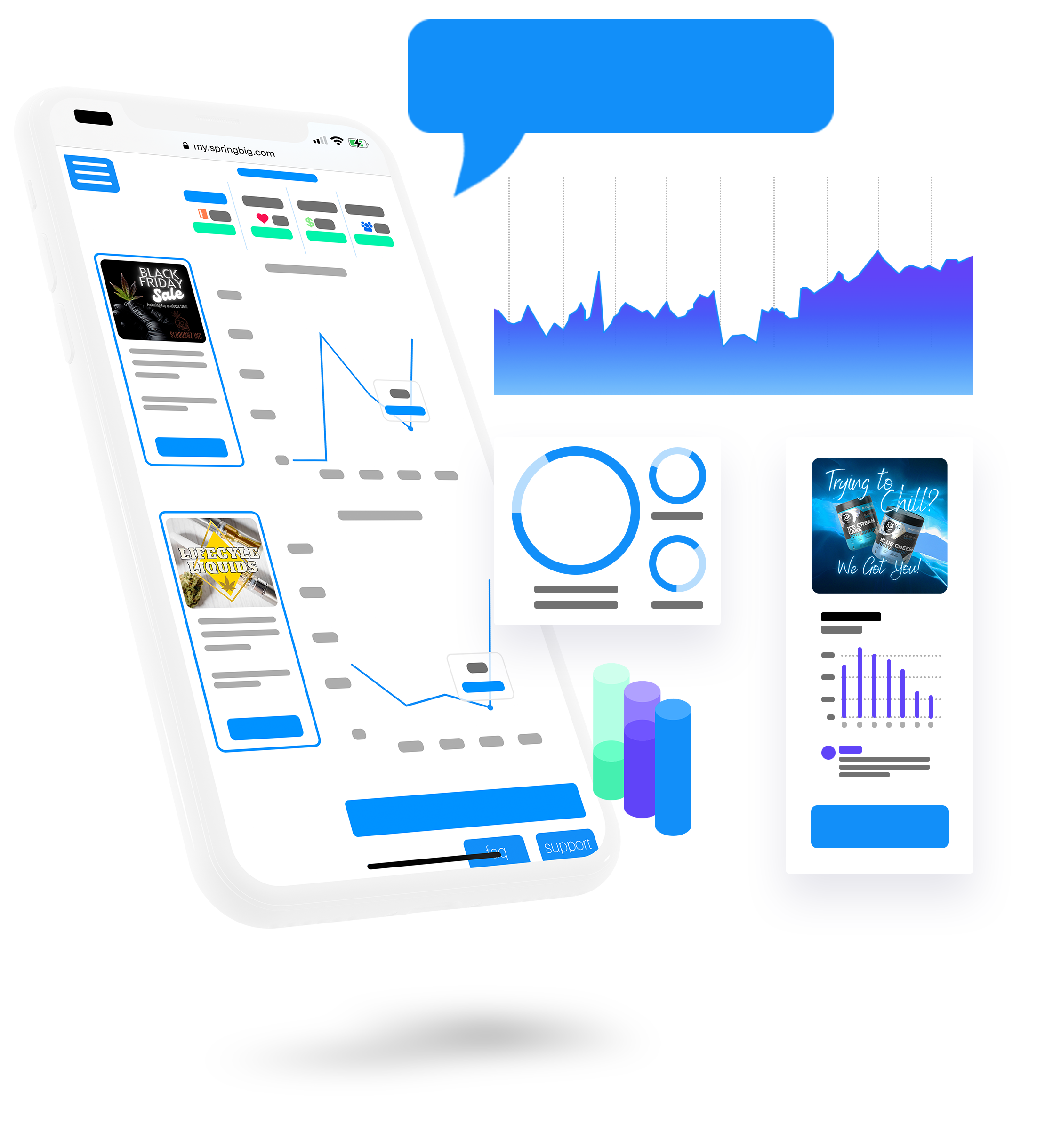Loyalty Marketing Makes a Dispensary Stand Out
As the cannabis industry continues to mature and become increasingly saturated, customers have a variety of dispensaries to choose from and it’s becoming difficult for a dispensary to stand out among the crowd with a unique customer engagement experience. People come in and shop once, then move on to the next dispensary often to redeem points at other dispensaries – hopping from one dispensary’s loyalty program to another. But with the right customer loyalty management software, you can offer loyalty points, digital coupons, and more in order to reward loyalty in your best customers – and ensure that they stay with your dispensary rewards program.
Decrease member Churn and build Brand Loyalty
Creating a successful loyalty rewards program is one of the biggest challenges that dispensaries will face. Loyalty programs are not a one size fits all strategy. But if you understand the principles behind why loyalty programs do in fact increase sales and retention, you will understand which is the best type of loyalty program is for your cannabis dispensary.
Loyalty programs work because of what’s known as the “Pareto Principle”–aka the 80/20 rule. It says that 20% of your customers account for 80% of revenue, and acquiring a new customer can cost as much as 7x more than retaining an existing one.
In essence, the customer lifetime value (CLTV) of your VIPs /loyal customers is far higher than the other 80%.. This number goes even higher when you account for loyalty program members who are actively engaged and consistently redeem rewards they’ve earned. springbig’s customer relationship management software (CRM) enables you to nurture the customer lifecycle and track these metrics
Because of this principle, sales teams and marketers must focus on turning existing customers into repeat customers. Dispensary loyalty programs are not supposed to please everyone. They are supposed to build relationships between you and your most loyal customers by explicitly treating them like VIPs.
But we didn’t just blindly follow this principle, we put it to the test. We ran the numbers on 10 of our biggest clients in the most competitive states in the cannabis industry and here’s what we found.
Best Loyalty Program Structure.
That said, when it comes down to the structure, not every customer loyalty program is created equally in terms of maximizing customer loyalty. Most can boost sales and help you create lasting relationships with your devoted customers, but it is important to structure your dispensary loyalty program in the most financially sound way possible
In other words, the ability to keep track of and integrates into your Point-of-Sale so your customer data accessible.
A personalized approach optimizes your customer experience and differentiates it from the standard retail customer loyalty programs. A Cannabis dispensary isn’t just a traditional retail merchant where the customer and business barely have an interaction.
Especially medical marijuana dispensaries where there is a patient-caregiver dynamic. You can go to most stores, get your product from the shelf, and checkout without interacting with a single person. The budtender-customer relationship is very clearly more engaging than this.
The two most popular ways to structure a rewards program are by allowing customers to earn points to redeem for rewards for every dollar spent. Or reward customer loyalty for how many by giving a point for each time a customer visits. This is similar to the traditional punch card’ programs that allow cardholders to earn a reward when they completely fill out the loyalty card.
This tactic incentivizes the customer to reach a clear goal, but as we’ll most cannabis dispensaries opt for a tiered system that accomplishes the same goal.
While many businesses employ visit l based loyalty program structure, a point-per-dollar loyalty program structure is infinitely more measurable and will enable you to completely understand what your program is costing you on a percent of sales basis and therefore allow you to understand the financial impact that your program is having on your business from both a cost and return on investment (ROI) perspective.
This is because a customer’s purchase habits at traditional retail stores, tiny businesses, are not likely to change drastically over time. The average purchase amount generally remains the same over time. At a coffee shop, for example, People tend to pick their preferred drink and stick with it only switching it up occasionally.
By rewarding customers only for each visit, your company can benefit from better customer retention and increased sales; however, this program will only allow you to track one thing successfully: customer visits.
Because most loyalty programs are based on a percentage of sales, if you are distributing points to your customers by the visit, there will be no way to accurately correlate the ratio of points to dollars spent with full access with data analytics tools like our data hub.
With a spend-based model, you could create promotions offering more points the more you spend on the said product. Customers would not only visit in order to find their favorite brand but also try to spend as much as possible on that visit. Because they are being rewarded for each dollar they spend, not just for just showing up.


